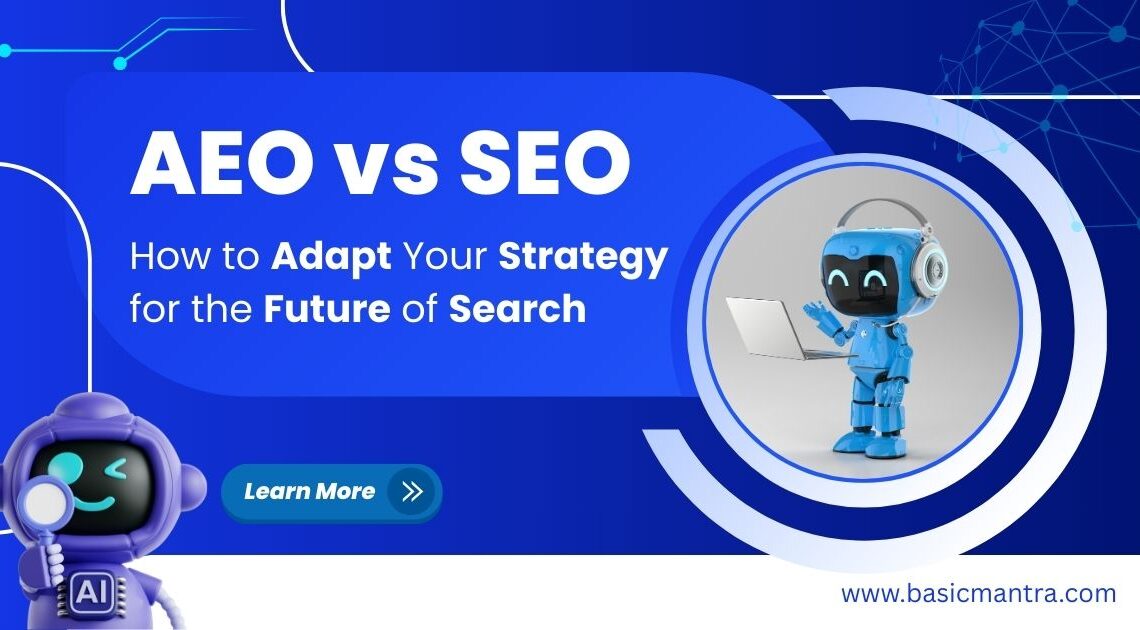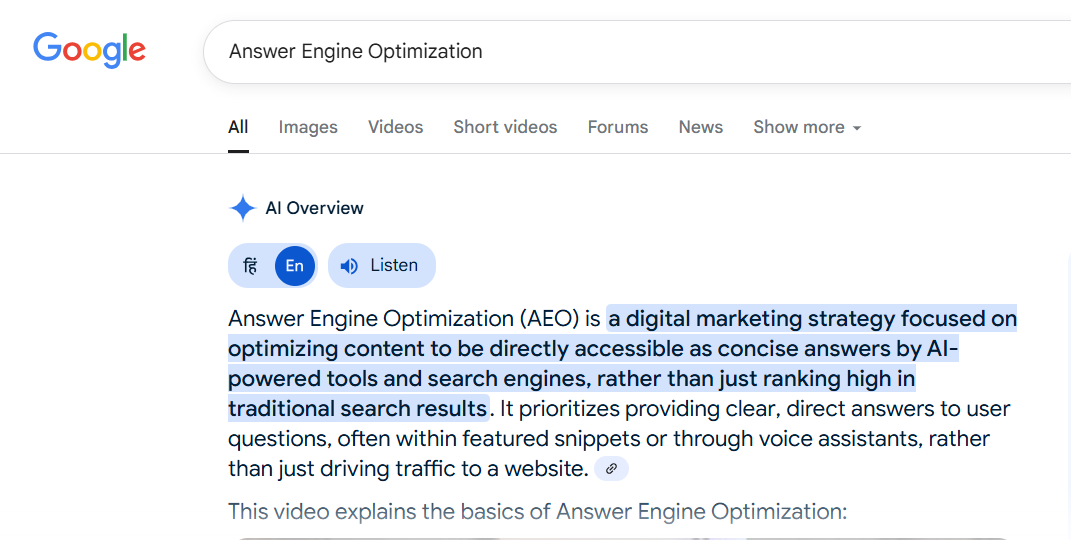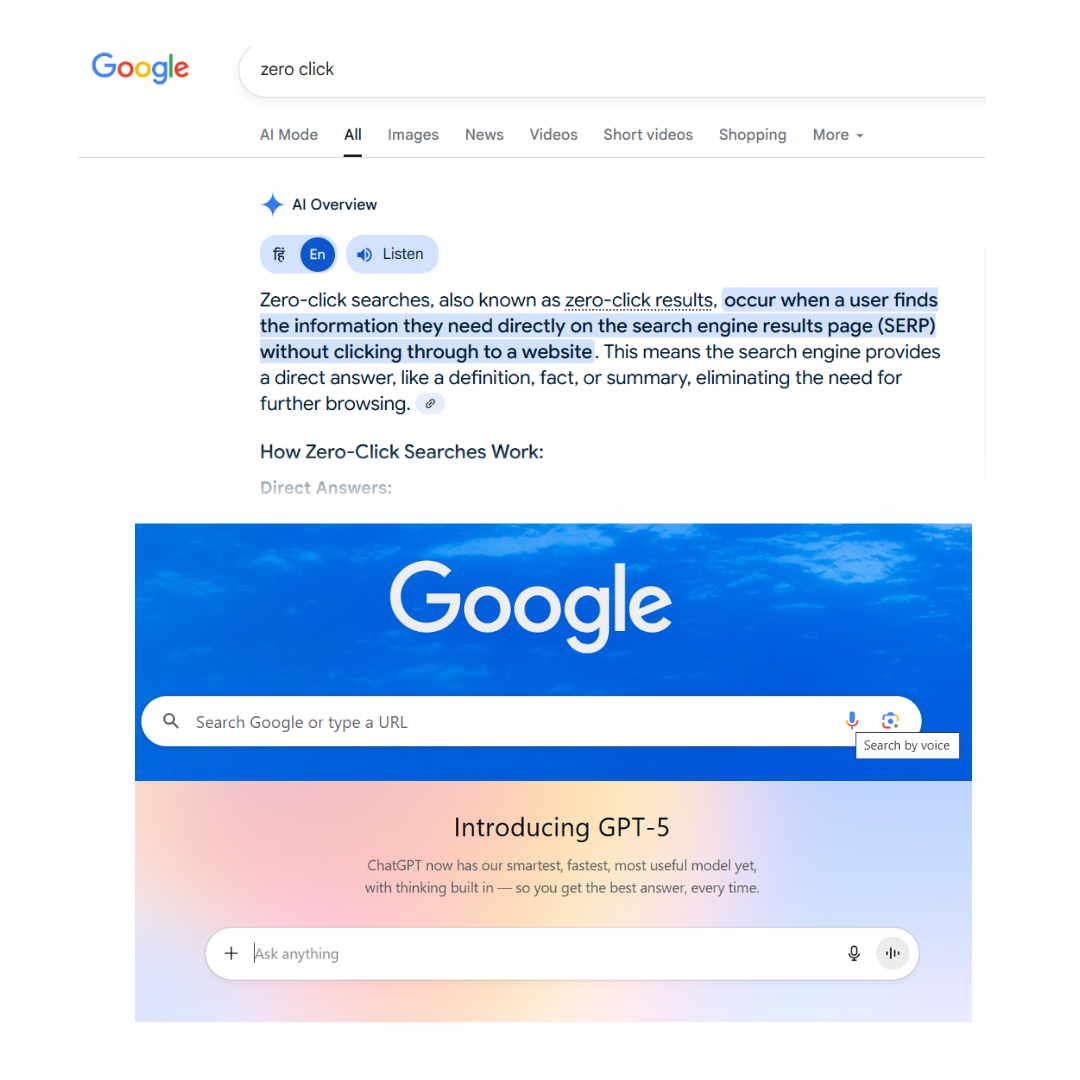
Ten years ago, search marketing was relatively straightforward. You’d pick a few keywords, optimize a blog post or landing page, and wait for Google to rank it. Fast forward to today, and the game has changed. People no longer just “search” — they ask, and they expect precise answers, often through AI chatbots, smart assistants, or voice search.
This change is fueling a dramatic shift in content strategy: the emergence of Answer Engine Optimization (AEO) in parallel with traditional Search Engine Optimization (SEO). If you’re curious about how these two strategies differ or whether one is supplanting the other this post spells it all out. Let’s dive into the increasing controversy surrounding AEO vs SEO, and what it actually means for your business and your future search visibility.
What Is SEO, and Why Has It Been So Effective?
Search Engine Optimization (SEO) is an old-school marketing tactic that’s dedicated to getting your site seen in organic search results. It’s all about getting your content found for what folks want on Google, Bing, and other search engines.
In easy terms, SEO is all about:
- Matching keywords with user intent
- Creating quality backlinks
- Getting your site technically sound (speed, mobile-first, etc.)
- Optimizing metadata and content organization
SEOs of the past have been likely the least expensive method to implement organic traffic. But it has one failing flaw: it continues to depend on users scrolling through URLs and selecting one of them to click on.
Since user interactions are now more query- and voice-based, this model is not always perfect. That is where AEO begins to enter the equation.
AEO Explained: What Is Answer Engine Optimization?
Answer Engine Optimization (AEO) is a newer approach that aligns your content with platforms that answer questions directly, instead of just listing web results. Think of AI assistants like Siri or Alexa, or even Google’s Search Generative Experience (SGE). They’re designed to serve a precise response, not a bunch of links to browse.

Here’s the key shift: while SEO helps your page appear among search results, AEO helps your content become the answer to a query.
This approach is particularly important in:
- Voice search
- Zero-click searches (where users get their answer directly on the search page)
- AI chat tools and conversational interfaces
A strong AEO marketing strategy involves structuring content so that these platforms can easily identify, extract, and deliver answers from your site. That means embracing schema markup, answering specific questions clearly, and positioning your content as a trustworthy source.
If SEO is about visibility, AEO is about authority and immediate value.
AEO vs SEO: Understanding the Differences
Now that we’ve defined both, let’s dig into the real differences between AEO vs SEO — and what they mean for content creators and marketers alike.
Aspect Comparison Table
| Aspect | SEO | AEO |
| Primary Goal | Improve search engine rankings | Provide direct answers to user queries |
| User Behavior | Keyword typing and browsing | Conversational search and voice input |
| Platforms | Google, Bing | ChatGPT, Siri, Alexa, Google SGE |
| Content Format | Blogs, articles, webpages | FAQs, schemas, featured snippets |
| Optimization Focus | Keywords, links, technical health | Intent understanding, context, and clarity |
| Output | A list of links to explore | A single, summarized answer |
Understanding these contrasts is critical. For example, someone typing “best ergonomic office chairs” is served a list of pages via SEO. But someone asking, “What’s the best ergonomic office chair under ₹10,000?” expects a direct recommendation — something AEO is better equipped to handle.
For businesses, the question isn’t “which one is better?” Instead, it’s “how do I build a strategy that covers both fronts?”
Why AEO Matters in 2025 and Beyond
We’re living in the age of smart assistants, AI interfaces, and machine learning. This means that search queries are becoming more natural, more conversational, and more demanding.
Here are a few reasons why AEO is no longer optional:

- Zero-click searches are rising. According to SparkToro, more than 50% of Google searches end without a single click.
- Voice search is mainstream. People are asking questions aloud — not typing keywords — and expect one accurate, spoken answer.
- AI tools are content gatekeepers. Platforms like ChatGPT and Perplexity AI don’t list ten blue links. They summarize. And unless your content is optimized to be summarized, it may never reach the end user.
So yes, traditional SEO remains critical, but the future of search engine optimization will depend heavily on whether your content can directly answer the questions people ask.
How to Optimize Content for AEO and SEO — Together
Here’s the great news: it’s not either-or. The true opportunity is to marry the best of both approaches. So how do you do that?
1. Organize Your Content with Questions in Mind
Utilize H2s and H3s that are driven by user questions. If individuals are searching, “How do I optimize my website for AI search?” — that’s your title.
2. Provide Simple Answers First
Don’t force users to scroll to find the most important information. Pre-summarize the answer upfront in the first 100 words of each segment.
3. Use Schema Markup
Implement structured data (such as FAQPage, HowTo, Article) to help search engines and AI systems better comprehend the nature and structure of your content.
4. Refresh Your Existing Content
There were many older pages prior to AEO. Audit those pages and reimplement with AEO tactics, such as answer-first content structure, schema tags, and question-based short subheadings.
5. Optimize for Featured Snippets
Google likes to pull in content into snippets when it’s structured as a cut-and-dry direct answer. Put your content in a position to be considered for that.
6. Balance Length with Clarity
Long articles are wonderful SEO. Within them, however, add bite-sized explanations and summary boxes spidered by AEO tools.
Break it down this way, and this is satisfactory to both algorithms and users — a two-for-one.
Conclusion: The Smartest Strategy Blends AEO and SEO
If you’re looking to build digital visibility that stands the test of time, the key takeaway is this: it’s not AEO vs SEO — it’s AEO plus SEO.
Traditional SEO ensures your content is discoverable. AEO ensures it’s chosen by bots, assistants, and AI tools. And together, they create a content experience that serves both machines and humans better.
So don’t wait for your competitors to figure it out first. Start adapting today with Basic Mantra. Structure your content for clarity, context, and intent. Make it skimmable. Make it helpful. And most importantly, make it ready for whatever or whoever asks the next question.
Author : Gaurav Mishra



